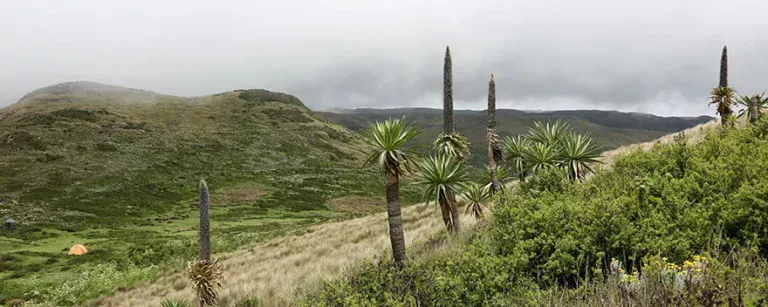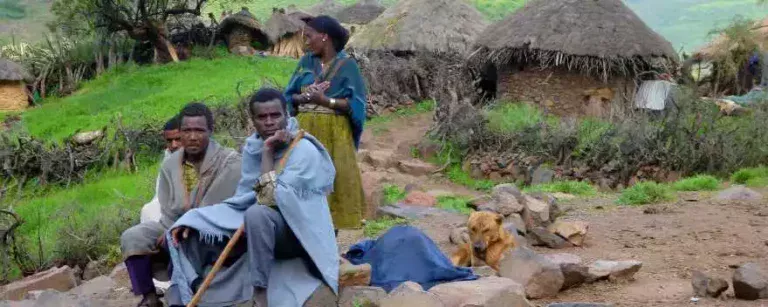Omo Valley “The Last Wilderness of Ethiopia”: A Journey into Nature’s Untouched Beauty
Tucked away in the southwestern cornerstone of Ethiopia, the Omo Valley, frequently alluded to as the final frontier of Ethiopian wilderness, evokes a paradisiacal charm reminiscent of Eden itself. This untouched oasis houses a staggering collection of exceptional fauna, picturesque panoramas, and aboriginal ethnic groups that have harmoniously coexisted with the natural world for aeons. This composition undertakes a thorough expedition into the unrivalled allure and cultural abundance that saturates the Omo Valley.
Omo Valley “The Last Wilderness of Ethiopia”: An Overview
Unveiling the Omo Valley involves a deep dive into its geographical features, biodiversity, and cultural richness. Framed by the Omo River, this region presents a fascinating mosaic of scenic landscapes – from the sprawling savannas teeming with wildlife to the tranquil riverbanks inviting a myriad of bird species.
Indigenous Tribes: The Cultural Heartbeat of Omo Valley
A journey through Omo Valley is incomplete without a glimpse into the lives of the indigenous tribes who call this wilderness their home. Each of these tribes possesses a distinct culture, language, and set of customs, contributing to the region’s vibrant cultural tapestry.
Hamar Tribe: Masters of Body Painting
Mursi Tribe: Where Lip Plates Speak Volumes
Karo Tribe: Artisans of the Wilderness
Dassanech Tribe: Guardians of the Omo River Delta
Bodi Tribe: Celebrators of the Ka’el Festival
Omo Valley Wildlife: A Safari Unlike Any Other
Omo Valley’s diverse ecosystems host a wealth of fauna and flora, making it a haven for wildlife enthusiasts and nature lovers alike. Its extensive savannas, dense woodlands, and serene water bodies serve as homes to a myriad of unique species.
The Omo River: Lifeline of the Valley
Omo National Park: Where Wild Encounters Await
Birdwatching in Omo Valley: A Feathered Paradise
Home to a splendid variety of bird species, the Omo Valley serves as a riotous painting of colors, patterns, and shapes. From the resplendent African fish-eagle to the delicate white-cheeked turaco, this birdwatcher’s paradise is a gallery of nature’s finest avian artwork.
Seasonally, the Omo Valley also welcomes a multitude of migratory birds. Their annual journey provides a mesmerizing spectacle and reaffirms the valley’s integral role in these nomadic species’ survival.
Sustainable Tourism in Omo Valley: The Balance of Preservation and Exploration
Sustainable tourism plays a vital role in preserving the Omo Valley’s cultural and natural wealth while ensuring economic opportunities for local communities. It’s a delicate balance that requires careful management and responsible travel practices.
The Impact of Tourism on Omo Valley’s Tribes
The Omo Valley, often referred to as Ethiopia’s last untouched wilderness, provides an unfiltered glimpse into nature’s magnificence and the diverse tapestry of human culture. Its unique blend of human, floral, and faunal diversity stands as a testament to the delicate, yet vibrant, interplay of life in its many splendid forms.
The tribes of the Omo Valley are an eclectic mix of unique cultural identities. Each tribe boasts distinctive customs, languages, and rituals, making the region a vibrant melting pot of traditions that have survived the test of time.
Omo Valley’s Natural Heritage: Threats and Conservation Efforts
Tourists aren’t just passive observers but active participants in this narrative. By adopting responsible tourism practices, every visitor can contribute to the preservation of the Omo Valley’s unique heritage and the welfare of its communities.
Responsible Tourism: Guidelines for Visitors
Responsible tourism is a form of travel that seeks to minimize the negative impacts on the environment and local communities, while enhancing the positive ones. It’s about making better choices for our planet and for people.
Why should we care about responsible tourism? Simply put, it helps to conserve our natural and cultural heritage, and improve the welfare of local communities. It ensures that tourism is sustainable, benefitting not just the present but also future generations.
Frequently Asked Questions
What is unique about the Omo Valley?
Omo Valley, dubbed “the last wilderness of Ethiopia,” stands out for its impressive biodiversity, stunning landscapes, and the richness of indigenous cultures. It hosts a unique blend of indigenous tribes, each with distinct customs, languages, and ways of life.
Why is Omo Valley called the “last wilderness of Ethiopia”?
Omo Valley is often referred to as the “last wilderness of Ethiopia” due to its relatively untouched natural beauty and the preservation of traditional ways of life amongst its indigenous tribes.
Which tribes can be found in the Omo Valley?
The Omo Valley is home to several indigenous tribes, including the Hamar, Mursi, Karo, Dassanech, and Bodi, each possessing a unique culture, language, and set of customs.
What kind of wildlife can be found in the Omo Valley?
Omo Valley boasts a wealth of wildlife, including mammals like African elephants, giraffes, and various antelope species. It is also a birdwatcher’s paradise, with over 300 bird species recorded.
How can one practice sustainable tourism in the Omo Valley?
Sustainable tourism in Omo Valley involves respecting local customs and traditions, supporting local economies, minimizing environmental impact, and promoting conservation efforts.
Is it safe to travel to the Omo Valley?
While travel advisories should be checked regularly, the Omo Valley is generally considered safe for tourists. However, it is always advisable to travel with a reputable tour operator and respect local customs and laws.
To Conclude
The Omo Valley, poetically dubbed as “the last wilderness of Ethiopia,” proffers an enthralling excursion into the unblemished splendor of nature and the multitudinous cultural landscape. As we steer our course through the contemporary world, this undisturbed sanctuary stands as an eloquent testament to the symphony of life that resonates between diverse organisms – humankind, verdant flora, and varied fauna. May this odyssey into the heart of the Omo Valley ignite in us the zeal to appreciate and safeguard these last bastions of the wild, for they constitute an inestimable endowment that we, as a species, are privileged to inherit.










